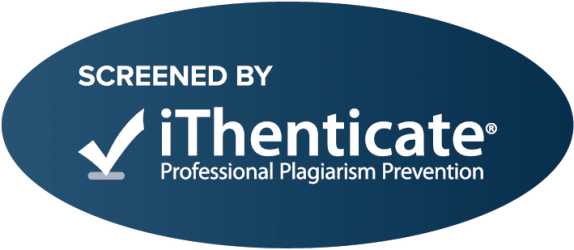The Effect of Social Stories intervention Technique on Self Management of Eating Behavior of a Child with Autism
Keywords:
Social stories, eating, Social Stories Intervention Strategy, autismAbstract
This study explores whether or not Social Stories Intervention Strategy have positive effects on the eating behavior of a girl child with autism. Method. A girl child diagnosed as having autism disorder participated in the study. A pre- post- follow up design was used to examine the effectiveness of the social stories Intervention Strategy on the eating behavior of the target child. Results. Findings from this study indicated the effectiveness of the social stories intervention employed in teaching the target child self management of eating. Discussion. On the basis of the findings, the study advocated for the effectiveness of the social stories intervention employed in teaching the target child self management of eating.Downloads
References
Adams I., Gouvousis, A., Van Lue, M., & Waldron, C. (2004). Social story intervention: Improving communication skills in a child with autism spectrum disorder. Focus on Autism and Other Developmental Disabilities, 19(2), 87-84.
Agosta, E., Graetz, J. E., Mastropieri, M. A., & Scruggs, T. E. (2004). Teacher-researcher partnerships to improve social behavior through social stories. Intervention in School and Clinic, 39(5), 276-287.
Ali, S. & Frederickson, N. ( 2006).Investigating the Evidence Base of Social Stories , Educational Psychology in Practice 22(4): 355-77.
Barry, L. M., & Burlew, S. B. (2004). Using social stories to teach choice and play skills to children with autism. Focus on Autism and Other Developmental Disabilities, 19, 45-51.
Batshaw, M. L. (1997). Children with disabilities: A medical primer (4th ed.). Baltimore, MD: Paul H. Brookes.
Bledsoe, R., Myles, B. S., & Simpson, R. L. (2003). Use of a social story intervention to improve mealtime skills of an adolescent with asperger syndrome. The National Autistic Society, SAGE Publications, 7, 289-295.
Brownell, M. D. (2002). Musically adapted social stories to modify behaviors in students with autism: Four case studies. Journal of Music Therapy, 39, 117-144.
Crozier, S., and Tincani, M. (2007). Effects of social stories on prosocial behavior of preschool children with autism spectrum disorders. Journal of Autism and Developmental Disorders, 37(9), 1803-1814.
Cullain, R. E. (2000). The effects of social stories on anxiety levels and excessive behavioral expressions of elementary school-aged children diagnosed with autism (Doctoral Dissertation: The Union Institute). Dissertation Abstracts International.
Delano, M., & Snell, M. E. (2006). The effects of social stories on the social engagement of children with autism. Journal of Positive Behavior Interventions, 8(1), 29-42.
Feinberg, M. J. (2001). Using social stories to teach specific social skills to individuals diagnosed with autism. Unpublished doctoral dissertation, California School of Professional Psychology, San Diego.
Ganz, J.B. (2007). Classroom structuring methods and strategies for children and youth with Autism Spectrum Disorders. Exceptionality, 15, 249 – 260.
Graetz, J. E (2003). Promoting social behaviors for adolescents with autism using social stories. Unpublished dissertation, George Mason University.
Gray, C. A. (1998). Social stories and comic strip conversations with students with Asperger syndrome and high-functioning autism. In E. Schopler, G. B. Mesibov, & L. J. Kunce (Eds.), Asperger syndrome or high-functioning autism? (pp.167- 198). New York: Plenum Press.
Gray, C., & Garand, J. (1993). Social Stories: Improving responses of students with autism with accurate social information. Focus on Autistic Behavior, 8, 1-10.
Hagiwara, T., & Myles, B. S. (1999). A multimedia social story intervention: Teaching skills to children with autism. Focus on Autism and Other Developmental Disabilities, 14(2), 82-95.
Kuoch, H., & Mirenda, P. (2003). Social Story interventions for young children with autism spectrum disorders. Focus on Autism and Other Developmental Disabilities, 18, 219-227.
Kuttler, S., Myles, B. S., & Carlson, J. K. (1998). The use of social stories to reduce precursors to tantrum behavior in a student with autism. Focus on Autism and Other Developmental Disabilities, 13(3), 176-182.
Lal, R. (2010) Effect of alternative and augmentative communication on language and social behavior of children with autism, Educational Research and Reviews, Vol. 5(3), pp. 119-125.
Ledford, R.L., & Gast, D.L. (2006). Feeding problems in children with autism spectrum disorders: A review. Focus on Autism and Other Developmental Disabilities, 21, 153 – 166.
Norris, C., & Dattilo, J. (1999). Evaluating effects of a social story intervention on a young girl with autism. Focus on Autism and Other Developmental Disabilities, 14(3), 180-186.
Pettigrew, J. (1998). Effects of the modeling of verbal and nonverbal procedures for interaction with peers through social stories (Doctoral dissertation, Texas Woman’s University, 1998). Dissertation Abstracts International, 59, 1452.
Romano, J. (2002). Are social stories effective in modifying behavior in children with autism? Unpublished doctoral dissertation, Farleigh Dickinson University.
Rowe, C. (1999). Do social stories benefit children with autism in mainstream primary schools? British Journal of Special Education, 26(1), 12-14.
Sansosti, F. J., Powell-Smith, K. A., & Kincaid, D. (2004). A research synthesis of social story interventions for children with autism spectrum disorders. Focus on Autism and Other Developmental Disabilities, 19(4), 194-204.
Scattone, D., Wilczynski, S. M., Edwards, R. P., & Rabian, B. (2002). Decreasing disruptive behaviors of children with autism using social stories. Journal of Autism and Developmental Disorders, 32(6), 535-543.
Scott, J., Clark, C., & Brady, M. P. (2000). Social skills and social competence. In Students with autism: Characteristics and instructional programming for special educators (pp. 247-270). San Diego, CA: Singular Publishing Group.
Shriver, M., Allen, K., & Mathews, J. (1999). Effective assessment of the shared and unique characteristics of children with autism. School Psychology Review, 28, 538-558.
Simpson, R. L., & Myles, B. S. (1998). Aggression among children and youth who have Asperger’s Syndrome: A different population requiring different strategies. Preventing School Failure, 42(4), 149-153.
Smith, C. (2001). Using social stories to enhance behavior in children with autistic spectrum difficulties. Educational Psychology in Practice, 17, 337-345.
Staley, M. J. (2001). An investigation of social-story effectiveness using reversal and multiple- baseline designs. Unpublished doctoral dissertation, University of Kansas.
Tanguay, E. (2000) . Pervasive Developmental Disorders: A 10-Year Review, Child and Adolescent Psychiatry, 39 (9): 1079–1095.
Additional Files
Published
How to Cite
Issue
Section
License

This work is licensed under a Creative Commons Attribution-NonCommercial-NoDerivatives 4.0 International License.










